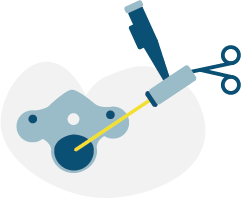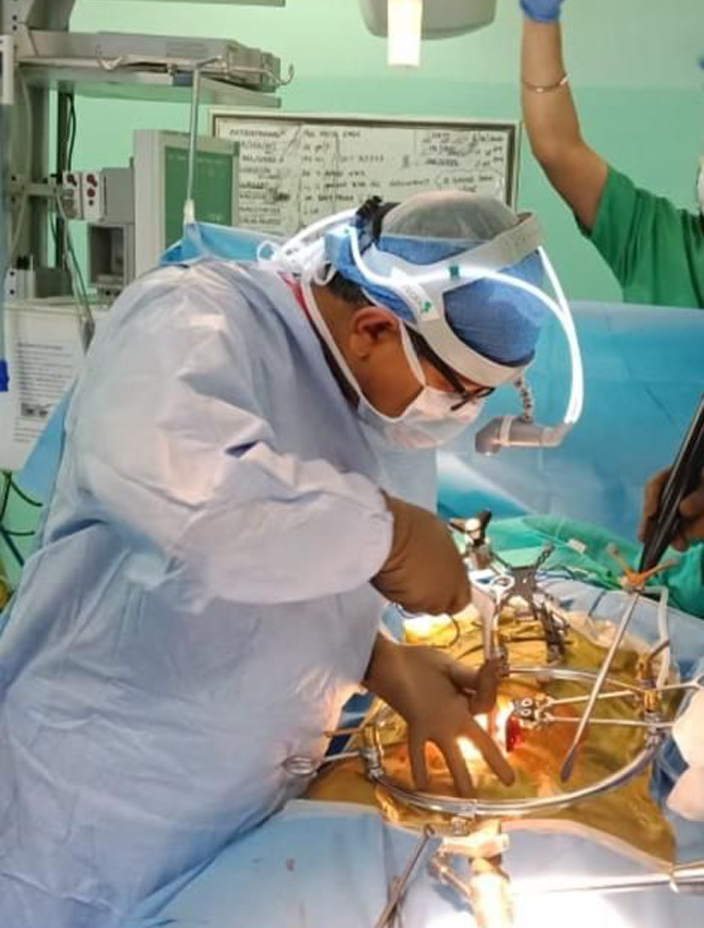In endoscopic spine surgeries, we use a thin, tubular instrument called endoscope that contains image transmission, illumination, irrigation, and a working channel. Endoscope can be placed at an area of interest using a small (< 1 cm) stab incision and sequential tissue dilation. In “Full Endoscopic” spine surgeries, constant irrigation by sterile fluid is done to maintain visibility, to control bleeding, to cool tissue when radiofrequency or laser are being used, and to wash out surgical debris.
Endoscopic spine surgeries can be used for patients suffering from acute / chronic back or neck pain, radiculopathies due to cervical / lumbar degenerative disc disease or herniated discs.
Being a minimally invasive technique, approach related tissue damage is close to nonexistent, resulting in faster and better postoperative recoveries. Using this technique, we are doing several procedures which includes but are not limited to
CERVICAL SPINE
-
Endoscopic discectomy
- Anterior Trans-discal approach
- Posterior Interlaminar approach
- Posterior Endoscopic Cervical Foraminotomy and Discectomy
- Endoscopic anterior cervical discectomy and fusion surgeries
- Endoscopic cervical disc replacement
THORACIC SPINE
- Endoscopic Thoracic Discectomy
- Endoscopic Thoracic Decompressive Laminectomy
- Endoscopic decompression in infections / trauma in Thoracic spine
- Endoscopic release in scoliosis surgeries
LUMBAR SPINE
- Endoscopic discectomy
- Endoscopic foraminotomy
- Endoscopic decompression for spinal canal stenosis
- Endoscopic Annuloplasty / Nucleoplasty
- Endoscopic transforaminal lumbar interbody fusion


